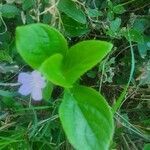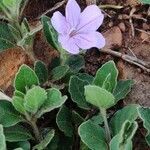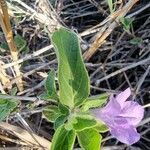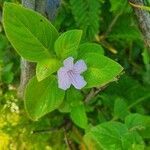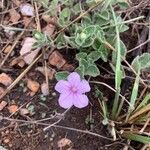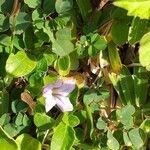Prostrate or erect dwarf shrub, up to 500 mm tall. Leaves 12-40 mm long, ovate or elliptic, apex obtusely triangular. Bracteoles spathulate-elliptic. Calyx equally 5-fid, divided nearly to base. Flowers white or mauve.
A herb or shrub. It is slightly woody. The leaf stalks are 1.2 cm long. The leaves are oval and the edges are wavy. They are 2.5 cm long by 1.5 cm wide. The flowers are white. They are funnel shaped.
